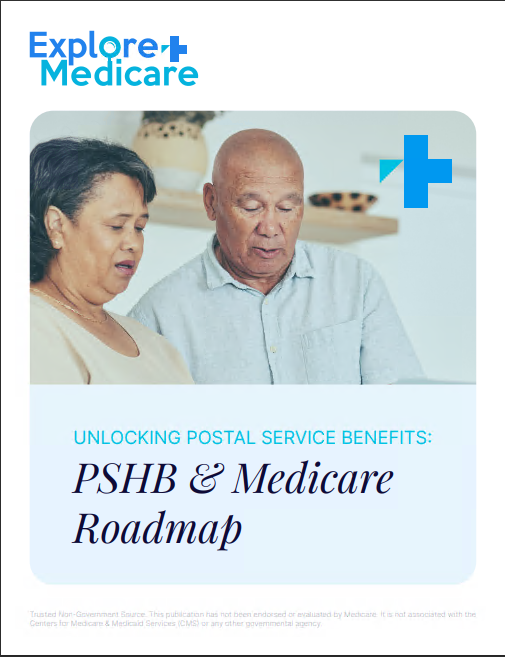Key Takeaways
-
Medicare costs in 2025 have increased in several areas, including premiums, deductibles, and out-of-pocket caps, which may come as a surprise if you’re not actively monitoring annual updates.
-
Understanding the structure of Medicare’s various parts and how they charge can help you prepare financially and avoid unexpected bills.
Medicare Isn’t Free—Here’s What You Need to Know
Many people assume Medicare is entirely free once they become eligible, but that’s not the case. While Medicare does provide critical coverage for millions of Americans aged 65 and older, it still comes with regular costs. In 2025, you’re responsible for a mix of monthly premiums, annual deductibles, copayments, coinsurance, and out-of-pocket maximums depending on which parts of Medicare you enroll in.
Understanding the Core Components of Medicare
Medicare is divided into different parts, each covering specific services. These parts also come with their own cost structures.
Medicare Part A: Hospital Insurance
Part A generally covers inpatient hospital stays, hospice care, and skilled nursing facility care. In 2025:
-
If you worked and paid Medicare taxes for at least 40 quarters, you don’t pay a premium.
-
If you worked 30-39 quarters, your monthly premium is $284.
-
Fewer than 30 quarters? You pay $518 per month.
-
The deductible per benefit period is $1,676.
-
After 60 days in the hospital, you start paying daily coinsurance that increases the longer you stay.
Medicare Part B: Medical Insurance
Part B covers outpatient care, doctor visits, lab services, and preventive care. In 2025:
-
The standard monthly premium is $185.
-
The annual deductible is $257.
-
After you meet the deductible, you generally pay 20% coinsurance for covered services.
Higher-income individuals pay more for Part B through Income-Related Monthly Adjustment Amounts (IRMAA), based on your tax return from two years ago.
Medicare Part D: Prescription Drug Coverage
Part D plans cover the cost of prescription medications. The structure includes:
-
A maximum deductible of $590.
-
An annual out-of-pocket cap of $2,000.
-
Once you meet the cap, you pay nothing more for covered prescriptions that year.
The introduction of the out-of-pocket maximum in 2025 is a significant shift from previous years, eliminating the need to go through a coverage gap or catastrophic phase.
Additional Costs You May Encounter
Even with the main parts of Medicare, you may face other charges depending on your health needs and plan selections.
Coinsurance and Copayments
-
For many services, you’ll pay 20% of the Medicare-approved amount after meeting deductibles.
-
Hospital stays beyond 60 days and skilled nursing stays beyond 20 days involve daily coinsurance.
-
Emergency room visits, outpatient surgeries, and specialist consultations typically come with either a copayment or coinsurance rate.
Late Enrollment Penalties
Delaying enrollment in Part B or Part D when you’re first eligible can result in lifelong penalties:
-
Part B: 10% increase in your premium for each full 12-month period you delayed.
-
Part D: Calculated based on how long you went without coverage and added to your monthly premium.
IRMAA Surcharges
In 2025, IRMAA kicks in if your individual income is over $106,000 or $212,000 for joint filers (based on 2023 tax returns). These surcharges can significantly increase your monthly premium costs for both Part B and Part D.
Budgeting for Medicare in Retirement
Planning for Medicare costs should be part of your broader retirement budgeting strategy. Here’s how you can prepare:
1. Calculate Your Total Monthly Expenses
Consider the standard Part B premium, a prescription drug plan premium, potential IRMAA charges, and supplemental costs such as dental, vision, or hearing not covered by Medicare.
2. Save for Deductibles and Cost Sharing
Even if you have a supplemental plan, you may still need to cover deductibles, copays, or coinsurance. Building a medical emergency fund can help you manage sudden healthcare costs.
3. Reassess Your Income Annually
Since IRMAA is based on your tax returns from two years prior, managing your taxable income can help minimize surcharges. Consider strategies such as Roth conversions or drawing from non-taxable accounts.
Major Changes to Be Aware of in 2025
Several policy updates and reforms are affecting Medicare beneficiaries in 2025:
The $2,000 Out-of-Pocket Cap for Part D
This change significantly limits your financial risk for prescription drugs. Once your total spending reaches the cap, your plan pays 100% of covered medications for the rest of the year.
Monthly Payment Option for Drug Costs
New in 2025, the Medicare Prescription Payment Plan allows you to spread your drug costs over the calendar year. This can ease budget strain for high-cost medications by avoiding large upfront payments.
Reduced Supplemental Benefit Availability
Some Medicare Advantage plans in past years offered extra perks like transportation or over-the-counter allowances. In 2025, fewer plans offer these benefits, so it’s important to review plan details if you’re considering enrollment.
Mid-Year Benefit Use Notifications
In an effort to improve awareness and utilization, Medicare Advantage enrollees will receive a mid-year summary highlighting unused supplemental benefits, helping you take full advantage of your coverage.
What to Watch Out For
With all these moving parts, you must stay informed and vigilant to avoid surprises.
-
Don’t assume coverage is automatic. You need to enroll and select your plans deliberately.
-
Review Annual Notice of Change (ANOC) letters each fall to understand plan modifications.
-
Consider how your other insurance (like retiree coverage or Medicaid) coordinates with Medicare.
-
Be mindful of enrollment windows: the General Enrollment Period is from January 1 to March 31 each year, and the Annual Enrollment Period is from October 15 to December 7.
Cost Assistance May Be Available
If your income and resources are limited, you might qualify for programs that help lower Medicare costs:
-
Medicare Savings Programs (MSPs): Help with premiums, deductibles, and coinsurance.
-
Extra Help (Low-Income Subsidy): Reduces Part D costs including premiums and copayments.
-
State Pharmaceutical Assistance Programs (SPAPs): Available in some states to support with medication expenses.
These programs often require an application, and eligibility is based on income, assets, and in some cases, state residency.
Avoiding Financial Surprises Starts with Awareness
By understanding your responsibilities and rights under Medicare, you can plan better and protect your retirement savings. The system isn’t as straightforward as it seems at first glance, but with the right approach, you can stay in control of your healthcare budget.
Get in touch with a licensed agent listed on this website to receive tailored support and explore your Medicare options.





